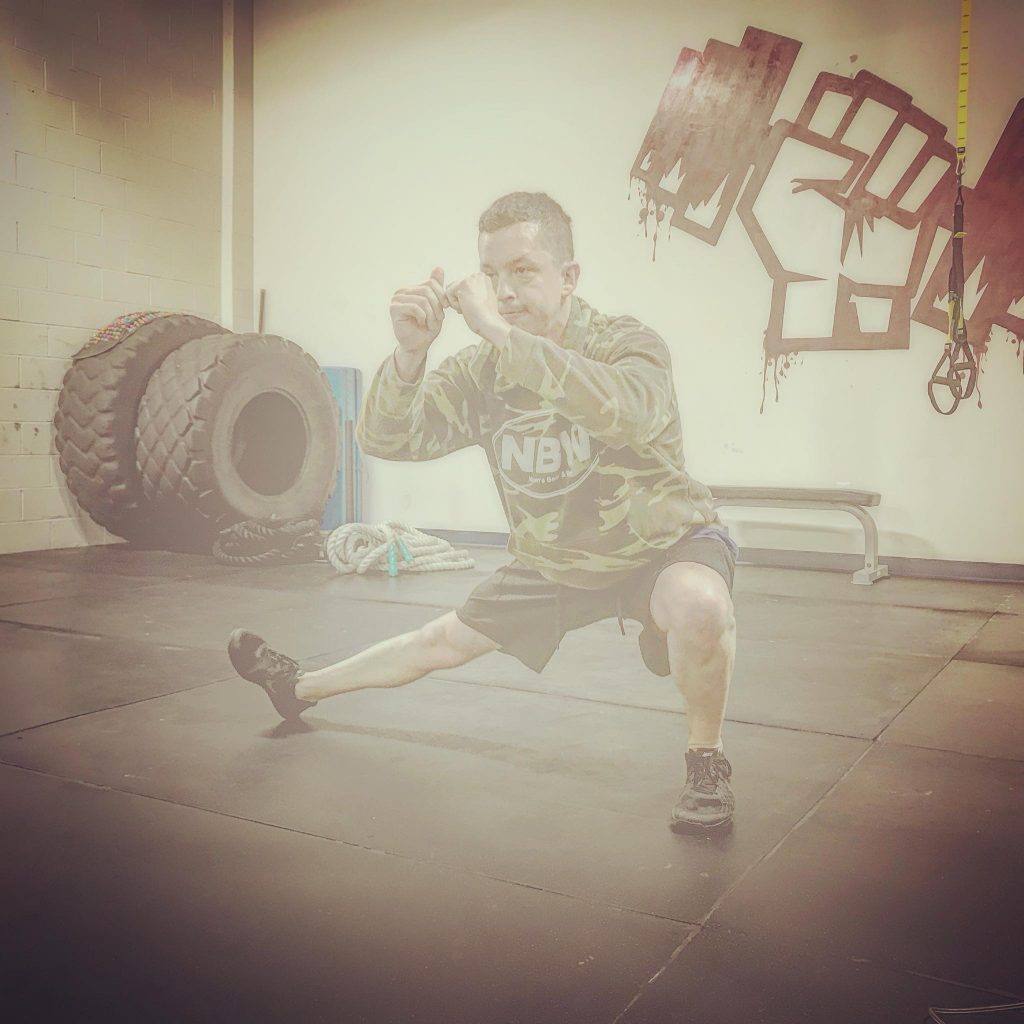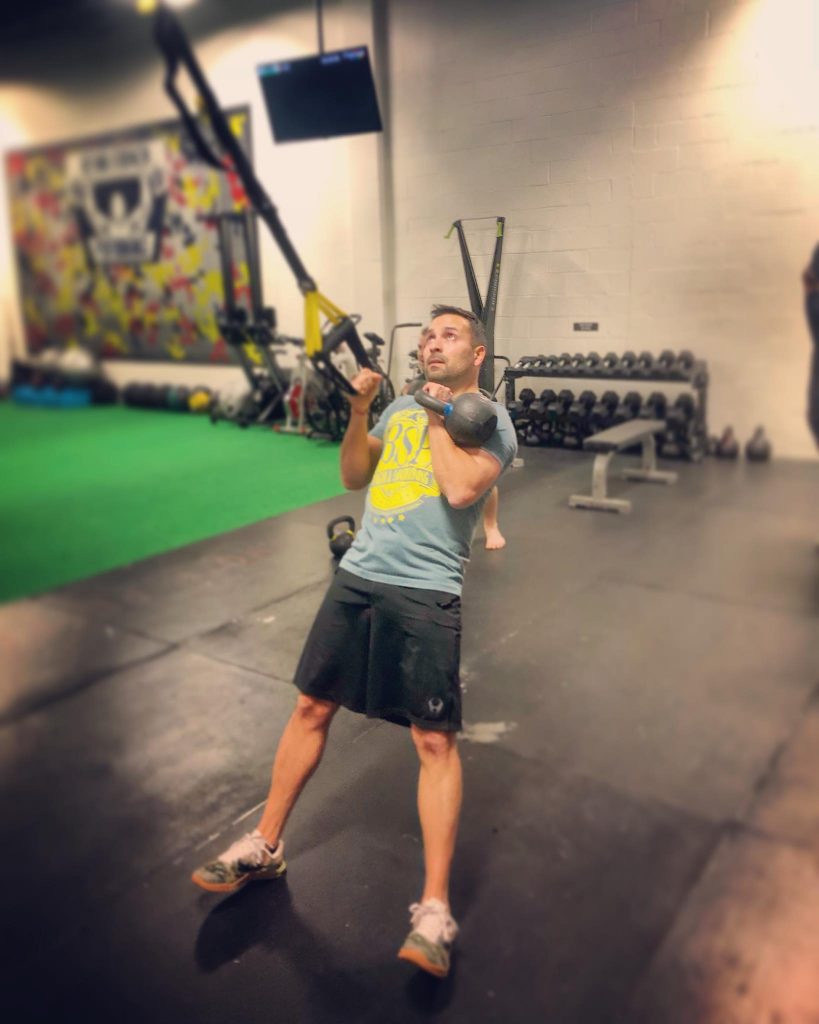Would you like to know about a secret “hack” in the fitness world that easily and instantly sheds pounds of body fat, or adds lean muscle mass? So would I! But, since we’re in the real world and that doesn’t exist, how would you like to learn about a method of training that helps you move and feel better? One that not only helps you gain strength but helps you move and feel better?
Oh, you’re still here?! Awesome, then let me tell you more about it.
Unilateral Training: Worth It
The training method I’m referring to above is not groundbreaking or new, but something that has been proven to work in numerous ways. That method is unilateral training. Unilateral training refers to training one side of the body at a time. For example, this could be a Reverse Lunge, Single Leg RDL, or Single Arm Landmine Press. Now, why is this the next best thing since sliced bread?
Unilateral training’s benefits include:
- Improved balance and stability
- A high training effect with less load used
- Decreased strength discrepancies and imbalances between sides
- Can train with and around pain
If you’ve only done bilateral movements, such as a Squat, and have never done a unilateral movement, like a Split Squat, it’s a humbling experience. That change from two legs to one leg, or both arms to a single arm increases the challenge greatly. We may be able to nail a decent Squat but when we get put into a Split Squat position, we’re falling all over the place. Using one leg forces a much greater need for balance and stability in our ankle, knee, hip, and core. Similarly, using one arm creates a rotational component to the movement that must be resisted.
If I’m training the Single Leg RDL, for example, then I must have a sufficient level of stability and balance or I can’t do the exercise. As I become proficient in this movement though, not only am I going to improve my balance and stability (assuming I can do it properly), but I can also get wicked strong too.
Single Leg RDL
This increased strength, stability, and balance helps us both in and out of the gym. When we are playing a pick-up game of basketball, running around with our kids, or just doing work around the house, unilateral training is of benefit. In addition, training these unilateral movements also pays dividends towards improving our bilateral movements.
When it comes to unilateral and bilateral movements (i.e., movements where both sides of the body work together), the two work in tandem. Squatting can build strength in our lower body and this increased strength will allow us to use greater loads potentially in our unilateral movements. Vice versa, Reverse Lunges will make us stronger, while also improving our stability and balance. They complement each other and allow us to train multiple ranges of motion and planes of motion. We achieve greater movement variability when using both training methods too. Unilateral movements can also help us clear up imbalances and strength discrepancies between sides.

As humans we’re naturally asymmetrical and we don’t have to be perfect side to side. Imbalances aren’t a death sentence, so we don’t “need” to always fix them depending on the given context.
If there is a major strength discrepancy or imbalance between sides though, and that is causing pain or messing up the movement, like a large difference in shoulder mobility between sides, then it may be beneficial to work on making that gap smaller. Besides the benefit of clearing up potential imbalances, unilateral movements also allow us to train hard with less load.
Since there is a greater demand on stability and balance when we switch to a unilateral movement, we don’t need to use as heavy of a load to make it challenging. Doing heavy rear foot elevated split squats can crush our lower body and leave us unable to use stairs the next day, just like heavy squats can (not that is HAS to, or that that’s what we’re after). Only, we can get this high training effect with less load which puts less stress on our systems and is easier to recover from. If we did nothing but heavy deadlifts for example, then that would be very taxing on our nervous system. But, if we did single leg RDL’s we get the above-mentioned benefits while not hitting the nervous system as hard all the time.
Lateral Goblet Squat
Don’t take this the wrong way, but…
To be clear, this article isn’t suggesting that we abandon bilateral movements because I said unilateral movements are the bee’s knees (fun fact: syrup comes from trees not bees…as some people may think :0). Both the bee’s knees can be used at once and I would be remiss to say otherwise. I’m simply making the case for why we shouldn’t avoid unilateral movements just because they challenge us, or we don’t feel competent at them right away.
What this article also isn’t suggesting, is that unilateral movements should be thrown into someone’s program from day one. A movement like the single leg RDL for example is a complex movement. You will be much more successful becoming competent in a bilateral hip hinge (think RDL or deadlift) first. As always, simple to complex. We layer exercise complexity as competency in movement increases. Now, let’s switch gears and talk training with pain.
Sometimes things hurt.
And that sucks. But that rarely means we can’t train, or shouldn’t train, because there is always something we can do. Even if that limits us to only training with our left arm, just our left leg, our right pinky toe, there’s always something we can do to train. Unilateral training can serve us in training while pain is present.
I’ll use a story to illustrate this idea of modifying training while something is hurting. There’s this guy I know decently well whom we’ll call Not Tommy (I know, “Not” is an interesting first name but it is what it is). He was walking on the side walk one day while writing down a note for a blog, when he accidentally hit a fire hydrant with his knee. Now, of course Tommy would never do this, but Not Tommy did. Silly guy. Anyways. Not Tommy then asked Tommy what he could do to train around this knee pain while it felt like poo.

Not Tommy’s knee seemed to hurt when he flexed it under load but was otherwise okay. Some ideas Tommy suggested for how he could train are:
- Prioritize hip hinging and single leg hip hinging (deadlifts, RDL’s, single leg RDL’s, etc.) since it requires minimal knee flexion
- Do single leg movements on just the left leg, such as step-ups and single leg squats
- Focus on mostly upper body movements, both unilateral and bilateral, while still training what he can with the lower body
That is by no means an exhaustive list of ideas, but it is a good start.
The take home point is that unilateral training allows us to keep training when we can’t use one of our limbs. They can serve as a tool to help us get moving and feeling better and keep us moving towards our goals.
And that’s what it’s all about right? We all want to move and feel better while striving towards the goals we’re working on. No one has said: “You know, I love feeling like doodoo when I move and being in constant pain.” That’s ludicrous (not the rapper Ludacris). Unilateral training isn’t some “secret hack” like I joked about in the beginning, but they’re no joke when it comes to how valuable they are.
